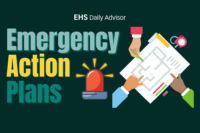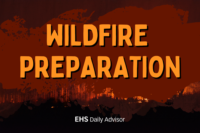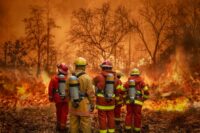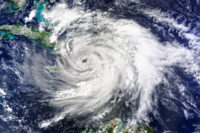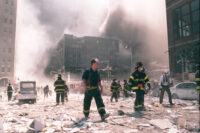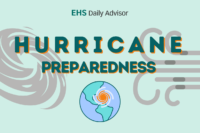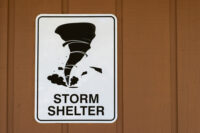No one wants it to happen, but an emergency, natural or manmade, can strike at anytime, 24/7. What’s more, it need not be a major, nationally-televised incident, such as a hurricane, earthquake, or act of political terror. An event as common as a local building fire can present just as large a challenge to you. These resources will help you create a plan for handling such crises, whatever their scope, and to carry it out in a way that best protects your employees and your company.
Free Special Report: 50 Tips for More Effective Safety Training
What can employers learn from a well-rehearsed emergency action plan (EAP)? According to OSHA, almost every business is required to have an EAP. After evaluating your current EAP, is there more that could be done? How often should employers communicate their EAP to employees? Here’s what you need to know about emergency action plans. Check […]
On episode 143 of EHS On Tap, Dom Tolli, Senior Vice President of Product Management and Platform Development for the Training Services division at the American Red Cross, talks about the importance of having workers trained in basic lifesaving techniques.
On December 8, the Federal Motor Carrier Safety Administration (FMCSA) proposed limiting the scope of regulatory relief provided by emergency declarations, as well as the duration of regional emergency declarations (87 Federal Register (FR) 75206). Under current regulations, when the president, a governor, or the FMCSA issues an emergency declaration, drivers and motor carriers providing […]
Wildfires are becoming increasingly more common with climate change, and they cause major hazards for both people and businesses. OSHA says that employers are required to protect workers from the anticipated hazards associate with the response and recovery operations for wildfires that the workers are likely to conduct. Here’s what you need to know about wildfire preparation. […]
Back to Basics is a weekly feature that highlights important but possibly overlooked information that any EHS professional should know. This week, we examine OSHA’s recommendations for preparing and responding to wildfires. Wildfires are becoming increasingly more common with climate change, and they cause major hazards for both people and businesses. According to the EPA, […]
Are you prepared for the peak of hurricane season? The National Oceanic and Atmospheric Administration (NOAA) still expects an above-normal Atlantic hurricane season despite a quiet season so far. NOAA’s Climate Prediction Center issued an updated outlook August 4, and NOAA still expects 14 to 20 named tropical storms, 6 to 10 hurricanes, and 3 […]
The National Institute for Occupational Safety and Health (NIOSH) needs to closely monitor members’ timely access to health services under its World Trade Center Health Program, the Government Accountability Office (GAO) concluded in a new report (GAO-22-105303) released July 29. Eligible responders and survivors of the September 11, 2001, terrorist attacks receive health services through […]
For the past four years, hazard communication has ranked in the top five for OSHA violations across every industry. In other words, organizations need to prioritize effective hazard communication programs. But there are many moving parts to a comprehensive program, and implementing one requires a commitment from everyone on your site. Here are three elements […]
Hurricanes are a form of tropical storms that have circulating air and wind speeds between 74-155+ miles per hour. According to OSHA, areas around the Gulf of Mexico, the Atlantic Coast, and certain parts of the Southwestern United States are at risk for hurricanes. As hurricane season begins, it is important for businesses to be prepared […]
In our latest installment of Ask the Expert, brought to you by the team of industry experts at EHS Hero®, we look at a recent question from a subscriber asking about compliance to OSHA’s tornado shelter requirements. See what the experts had to say. Q: Many of our company’s distribution centers do not meet the OSHA […]

